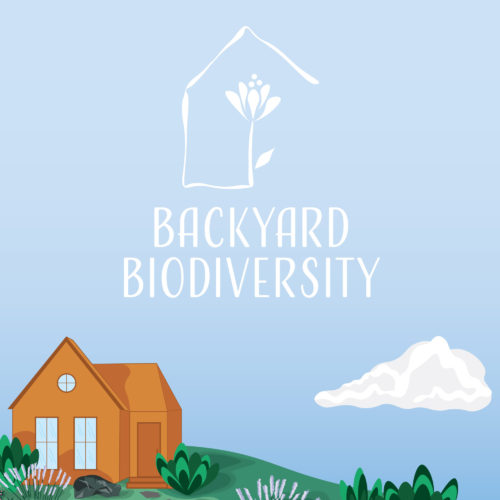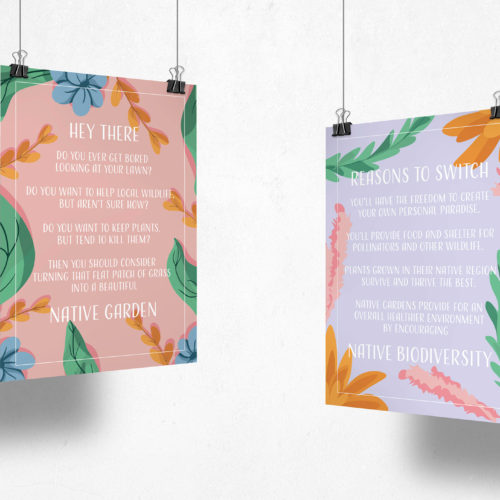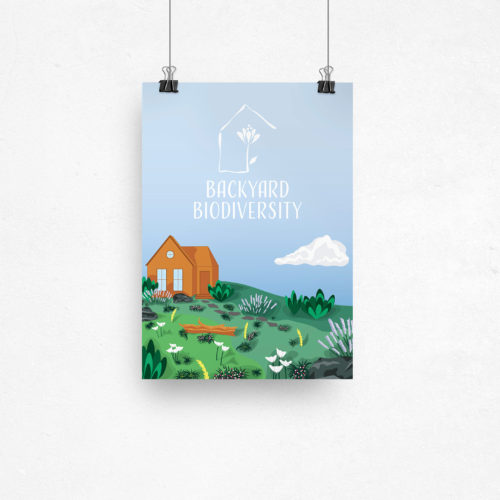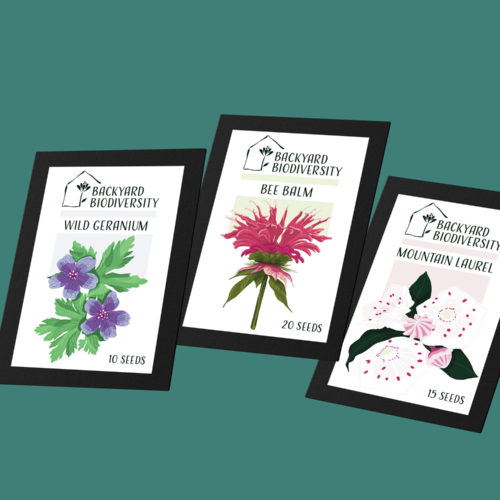Ansley McCullough
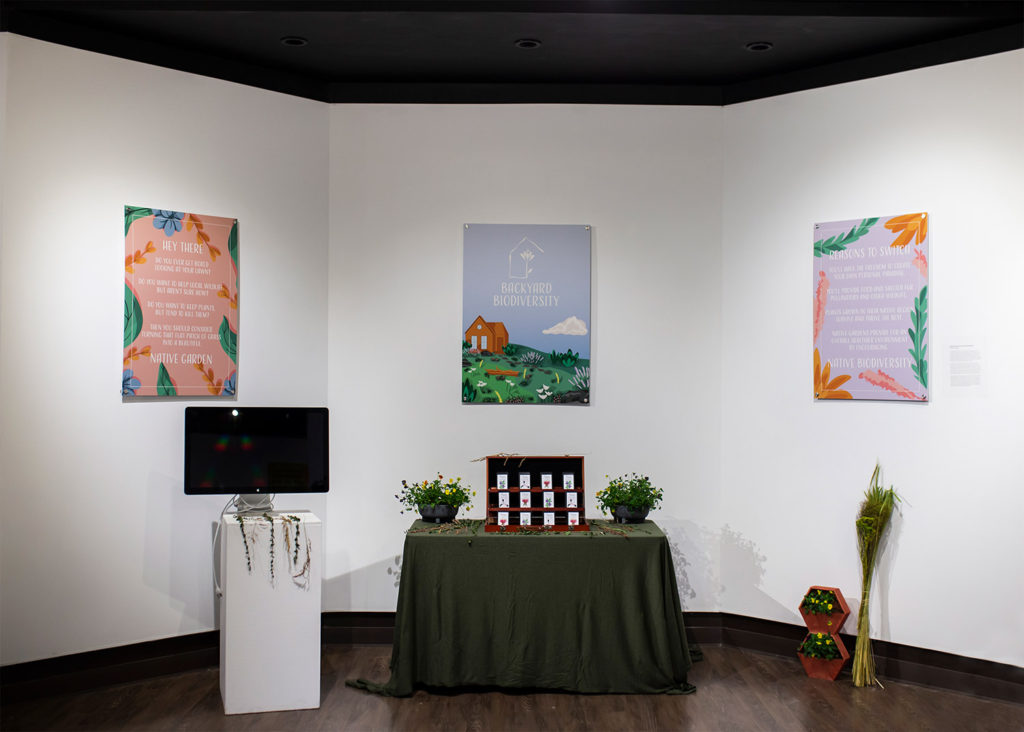
“Backyard biodiversity” by Ansley McCullough
For a long time now in human history, having freshly cut grass lawns has been the most popular way to decorate the space outside of the home. Shortly cut grass lawns have not always been popular, but their introduction as a symbol of status was impactful enough to convince many generations to spend time with their creation and upkeep. Now, keeping the lawn flat and short with almost no variation is seen as the standard. Some people decorate with a few bushes or flower beds, but these are not always as beneficial as they could be to the surrounding environment because of the popularity of using non-native plants instead of native ones.
The popularity of short grass lawns has resulted in them taking up a large portion of the earth’s land. This large and ever growing amount of space has been and continues to be taken directly away from nature, which has resulted in less space for native biodiversity. Grass lawns do not provide nearly as many benefits to the earth and its inhabitants as plants that are native to their region. Native plants provide the best nutrients to the environment and creatures that surround them because they are perfectly tailored to the environment in which they live. They provide protection and food for wildlife and pollinators, create cleaner air, and promote native biodiversity.
Backyard Biodiversity is a campaign to show examples of the environmental benefits of replacing grass lawns with native gardens, and to also show how much more beautiful and fun these can be than a flat lawn. The goal is to provide information, visual inspiration, and examples. Many people with grass lawns have an opportunity in front of them for a creative outlet that does so much good. They have a blank canvas for their own personalized fairytale garden that promotes native biodiversity and provides a countless number of benefits for the environment. All these people need is the knowledge and the inspiration to get started.
